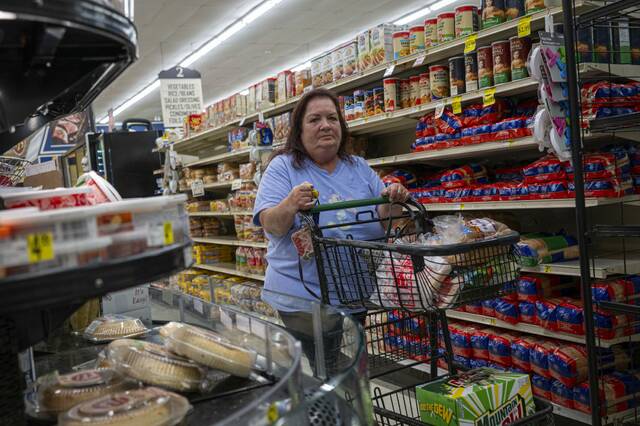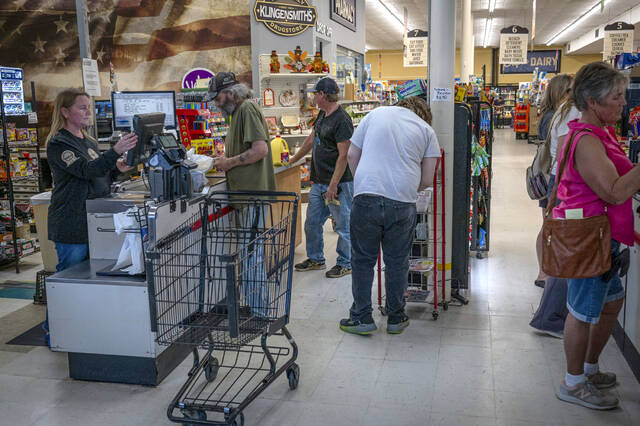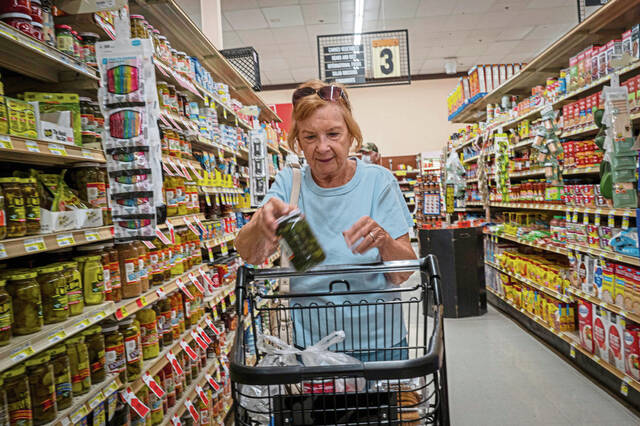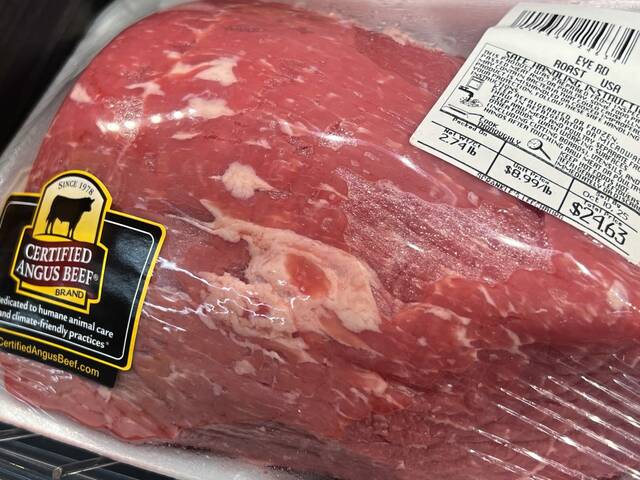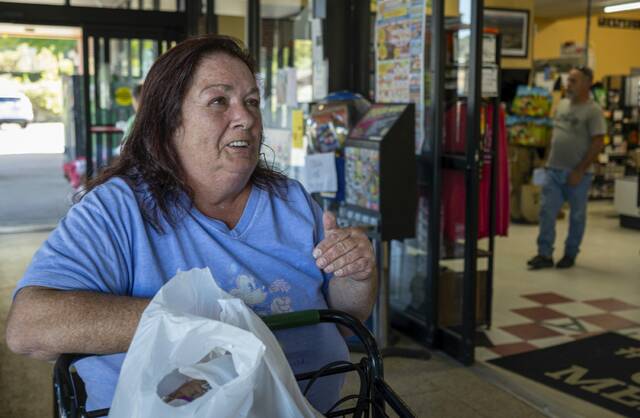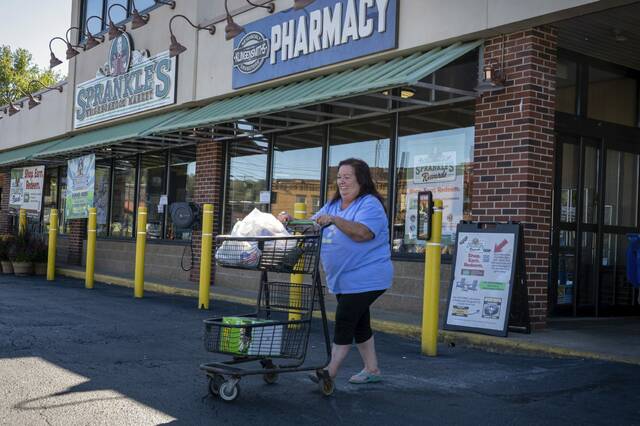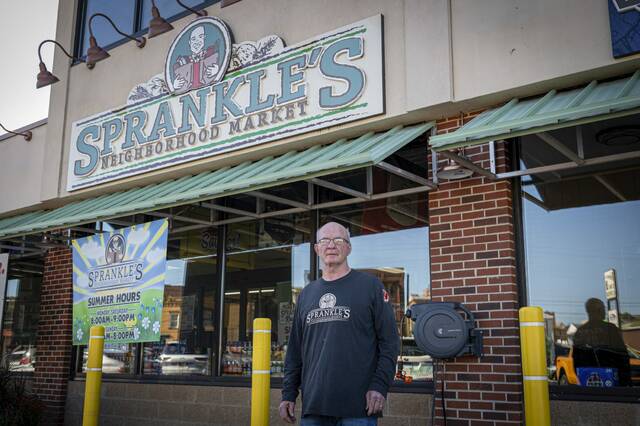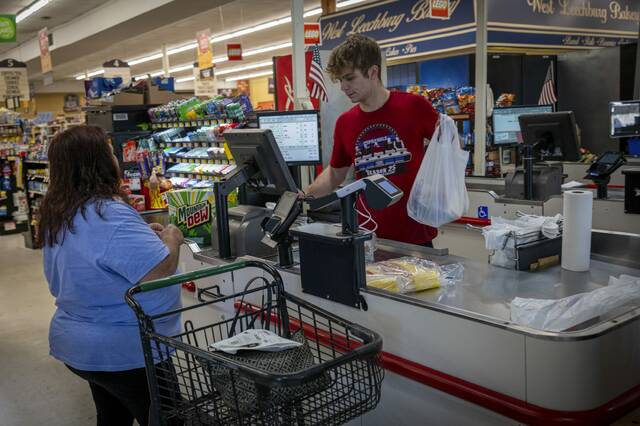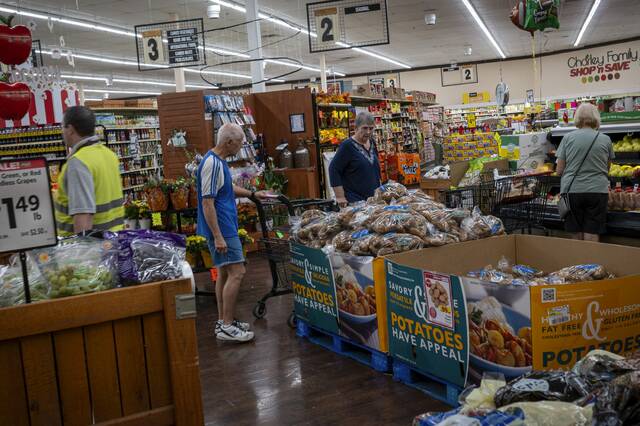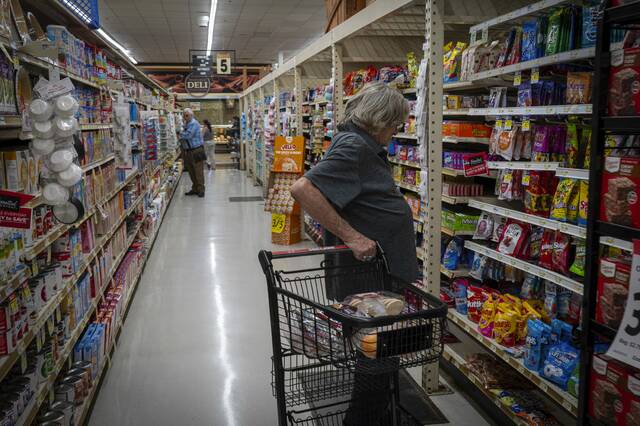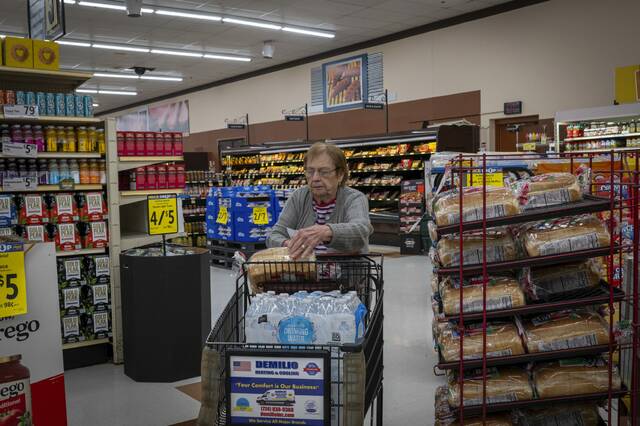'We're stretching': As grocery prices continue to climb, shoppers redefine their staples
The sticker shock is real: Grocery prices’ month-over-month increase in August were the highest they’ve been in three years.
And relief doesn’t appear to be on the horizon, according to one food economist. The reasons might sound familiar.
“There’s been a convergence of factors: lingering supply-chain issues from covid, the effect of Russia’s invasion of Ukraine, avian influenza and consumer demand, which has been significantly higher over the past two years,” said David Ortega, a Michigan State University professor who studies food prices.
Groceries on average cost 0.6% more in August than they did in July, according to the most recent data from the Consumer Price Index. The gauge from the U.S. Department of Labor measures the change in prices paid by urban consumers for goods and services. It is weighted across several categories, including food, energy prices, gasoline, clothing, medical care and other economic staples.
The last time the “food at home” category, or groceries, rose that steeply was in summer 2022, according to the CPI.
Ortega said the CPI tracked several price hikes in grocery-store staples from July to August: Roasted coffee is up 1.4%, bananas are up 2.4% and fresh tomatoes are up 4.5%. Imported produce is an area where economists say higher prices are also on the horizon.
“Tomatoes from Mexico are being hit with a 17% tariff,” Ortega said. “In the cold months, we’ll start to see that impact more, when domestic production isn’t happening.”
Ryan Young, a senior economist at the Competitive Enterprise Institute in Washington, D.C., said, “Things that are normally quite affordable in the off-season are going to get more expensive.”
The pinch is starting to feel like a squeeze for many shoppers.
Those who spoke with TribLive on Monday almost universally said steadily rising prices have meant cutting back not just on indulgences like snack food but also giving up staples long considered affordable.
Compared with the price spikes during the covid-19 pandemic, inflation in the U.S. has largely leveled off, according to the U.S. Bureau of Labor Statistics. But that new level is a percentage point or two higher than in pre-pandemic years, and that ultimately can mean higher costs.
The rising price of groceries has forced Lucy Monholland of Youngstown to choose between her meals and her medication.
Monholland said she and her husband have cut back on expenditures — including stopping their prescription medicine — to stretch their tight budget while raising two children.
“We have no extra money,” said Monholland, a stay-at-home mother who was grocery shopping Monday at Giant Eagle in Unity. “We literally do nothing. We stay at home. We don’t go out to eat ever. I make everything homemade that I can.”
If prices continue to rise, she said, “I guess I’m going to have to get a job.”
That will mean paying even more money — for day care.
“That’s the whole reason why I quit my job,” she said. “Day care was my whole paycheck, so what’s the difference?”
Jason Ricksgers of Vandergrift walked out of Walmart in Harrison on Monday toting more than $500 in groceries.
“We have two adults and three kids. It’s a lot,” Ricksgers said. “We skip out on chips and Doritos because they’re just too expensive. We’re stretching our food, eating leftovers a lot. We’re not buying milk or bread unless we absolutely need it.”
Ricksgers said his family has been feeling the financial pinch from its grocery bills since 2021. He doesn’t expect costs to go down anytime soon.
“The way the economy is, and the way people need (food), I think the price is just going to keep going up,” he said.
Helen Smith of Normalville, who is on disability, said she doesn’t spend as much on her family now that both of her sons have good-paying jobs.
Still, she said, she makes an effort to buy things that are on sale, and she will consider switching brands to save money.
“If I try a cheaper brand and I like it, I’ll buy it,” she said while at Giant Eagle in Unity, but added, “For ketchup or peanut butter, I wouldn’t change the brand.”
Smith said she has cut back on playing bingo and buying lottery tickets to help keep her spending in check.
“I have everything I need,” she said, “but I know a lot of people are suffering.”
Luke Cummings of Apollo said the grocery bill for him and his wife likely has doubled over the past six months.
“I think the tariffs have something to do with it,” said Cummings, a semi-retired dental lab technician who was at the Harrison Walmart. “I bought 2¼ pounds of ground burger today, and I was shocked that it was $14.83. The pretzels my wife and I like are up to $6 or $7 a bag. So if I’m going to get the beef, I’m going to skip the pretzels.”
Cummings said a lot of his family members are cutting back on meat.
“We just try to make meals where we can have leftovers for a day or two,” he said.
Zack Zombek of Mt. Pleasant Township, who relies on a pension, said he buys less since prices have increased.
“I don’t buy as much steak,” he said. “I eat more ground meat.
“Hopefully, it turns around, but I doubt it. Once (prices) go up, nothing comes down.”
When it comes to beef, Zombek is probably right, Ortega said.
“We import ‘lean trimmings’ of beef,” Ortega said. “The beef we produce here is fattier, and we rely on these lean trimmings from Brazil and Australia to get the correct blend for ground beef. And we’re imposing tariffs on those countries, including for beef products.”
“One of the ranch owners I spoke with said he’s in favor of tariffs on beef to protect farmers,” said Young, of the Competitive Enterprise Institute. “I disagreed with him because the U.S. doesn’t just import beef; we export it as well. South Korea, for example, is a big market for U.S. beef, and the Trump tariffs have really blown that up.
“So even if farmers benefit in the short term from the higher prices consumers are paying at the store, it’s going to bite them in other ways.”
For grocery store owners like Tom Charley, owner of Charley Family Shop ’n Save locations in Greensburg and Murrysville, the shifting tariffs imposed by the U.S. on other countries have begun to have a noticeable effect on prices.
For products coming from outside the U.S., Mexico and Canada (which aren’t exempted under the USMCA trade agreement), “the prices are impacted more so,” Charley said. “The last five years there’s been a steady increase in pricing, owing to inflation primarily, but also tariff-related.”
One of the first things Charley said disappeared from grocery stores was the “dollar” section, a collection of low-priced everyday items.
“So much of those are made in China,” Charley said. “The cost just exploded, and those sections have really disappeared.”
At the Charley stores, the most dramatic price hikes have been for products that cannot be produced in the U.S., like coffee and bananas.
Those were initially subject to tariffs, but Trump signed an executive order in September exempting products grown in tropical regions that cannot be grown in the U.S., alleviating tariffs for things like bananas, coffee and avocados. CPI figures for September have not been released by the U.S. Bureau of Labor Statistics.
“Bananas are a staple in U.S. households,” Ortega said. “So they might only be going up a few cents, but that adds up for a low-income family, which is already being forced to spend a larger portion of their disposable income on necessities like groceries.”
Ryan Sprankle, owner at Sprankle’s Neighborhood Market in Leechburg, said beef prices have been rising steadily over the past few years, but the past couple of months have shown an even more dramatic jump.
“Earlier this year, you could sell chuck roast for $4.99 a pound,” Sprankle said. “Now you don’t see it anywhere for less than $5.99.”
If consumers are looking for relief, it’s going to be difficult to get it from grocery store owners, Young said.
“Every grocery store has about a 1% to 2% profit margin,” he said. “Even if a grocery store eats as much of a tariff as it can, you can’t absorb a 25% tariff with a 2% profit margin.”
Patrick Varine, Joyce Hanz and Jeff Himler are TribLive staff writers.
Remove the ads from your TribLIVE reading experience but still support the journalists who create the content with TribLIVE Ad-Free.

